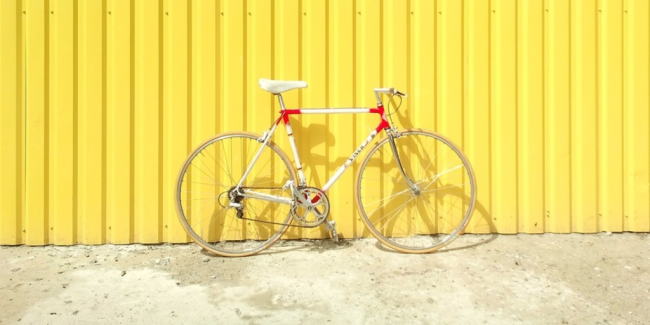Cycle your way to safer biking.
Published on
24 Oct 2016


Written by
Kate Senini
Consultant Physiotherapist
Call us on: (03) 9975 4133
With longer days and warmer weather, the amateur cyclists among us are getting back on the roads. Kate Senini looks at some of the ways you can stay safe this spring.
From one sporting event to another, we’ve witnessed multiple serious cycling accidents this year.
The slippery conditions of the mountain stages during the Tour De France resulted in epic falls from athletes we admire. Notably, Chris Froome, who after a fall in the 19th stage, finished the race on teammate Gerraint Thomas’ bike.
We saw another accident at the Rio Olympics. Tasmanian Richie Porte sustained a fractured shoulder blade following a crash in the Men’s Road Race. This was closely followed by Dutch cyclist Annamiek Van Vlueten, in a horrendous crash with 10km to go in the Women’s Road Race.
Following a cold and dark winter, you might be itching to get back on two wheels. But before you pull out your bike, pump up your tyres or clean the dust off your wheels – it’s time to get serious about bike safety.
Keep it balanced.
Cycling crashes have become more prevalent in Victoria due to the huge increase in cycling numbers over the past few years.
Many of us believe that all we need is the bike…but what we really need is the skills and knowledge of how to ride it.
One key tip is to consider your weight distribution. We seldom think about how we are balanced between the back wheel and the front wheel – despite its impact on potential accidents.
When a cyclist isn’t confident, they often tense up through their shoulders and arms. This pushes their body weight through the handlebars, to the ‘hoods’ of the bike (top of the handlebars).
This means the weight distribution is biased to the front of the bike. The moment a cyclist hits a pot hole or an unseen obstacle, the back wheel will kick up into the air, or slide out to the side – creating an instant crash situation.
To prevent this, try focusing your weight through the saddle of the bike. This favours the back wheel, which frees up the front of the bike for steering and maneuvering. This also allows the front wheel to track over unavoidable obstacles where necessary.
Stay flexible.
To achieve a balanced position on the bike, it is important to keep your upper body relaxed. The strength between the shoulder blades and core ensures that the shoulder girdle muscles are positioned correctly.
Whilst this sounds simple, it requires a good degree of upper back flexibility, mobility, and fine tuning of the muscles recruited between the shoulder blades, to maintain the position for several hours at a time.
Drop into safety.
Cycling in the ‘drops position’ whilst descending is a really important skill to develop. This position refers to holding on to the parts of the handlebars that curve outward, with your hands directly behind the brake levers.
While descending, there can be a sense of fear that the body is tilted further forward toward the road. However, cycling in the ‘drops’ Is another level of control for the cyclist. When descending at high speeds, retaining control of the front wheel is crucial.
Maintaining a correct cycling posture whilst in the drops requires trunk flexibility and shoulder girdle strength in a forward leaning position. The shoulder strength is vital to ensure the arms can remain relaxed and act to steer, without having weight distributed to the front of the bike.
We’re here to help.
If you’re looking to improve your bike positions, we conduct Biomechanical Cycling Assessments that provide individual feedback, advice, guidance and recommendations for our clients.
Our aim is to enable cyclists to achieve their next personal best, with safety on their side.
To learn more about our cycling assessments, get in touch or make an appointment with one of our friendly staff today.
About the Author
Kate Senini — Consultant Physiotherapist
Kate, who was a founding partner at Pure Physio in 2010, is now working exclusively in a clinical role. Helping people recover from injury and prevent future injuries has always been her true passion!
Back to blog home